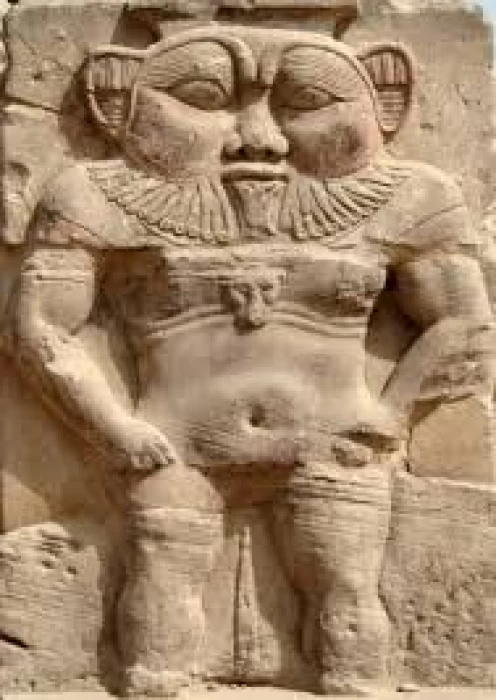
贝斯神 | 分娩之神 | 古埃及矮人神
上帝Bes|分娩之神
上帝Bes,是唯一的神性代表完全在正面的角度,它属于一个小神在古埃及最令人钦佩的流行想象的古埃及人。
Bes,一个具有恶魔特征的神性,奇怪的是一个家庭神性。 Bes是家庭和儿童的保护者,特别是与出生的关键阶段和对有害动物的防御有关。 这方面可能是最古老的。 Bes神的自然作用范围将他的形象传播到古埃及人日常生活的各种物体上,从头枕上看着无助的睡眠者的睡眠,到个人护理对象。
古埃及矮人神
Bes与舞蹈和音乐的关系也非常密切,与此他解除了愤怒的女神。 与太阳周期的联系表明它是太阳神的一种流行形式。
Bes是古埃及的仙女神,是一个复合的存在,既是神,也是撒旦战士。 他是战争之神,也是儿童分娩和家庭的保护者,并与欲望,娱乐,音乐和舞蹈联系在一起。 虽然他的角色最初似乎是法老的守卫,但他越来越多地在普通人中变得非常有名,因为他基本上保护了妇女和儿童。 他没有一定的邪教,所以没有寺庙或祭司以他的名义确定。 然而,他是最熟悉的古埃及人之一,通常在家居用品上有代表。
God Bes, is the only divinity represented exclusively in frontal perspective, it belonged to one of the minor deities in ancient Egypt most admirable to the popular imagination of the ancient Egyptians.
Bes, a divinity with demonic characteristics, is strangely a family divinity. Bes was a protector of the home and children, particularly linked to the critical phase of birth and the defense against harmful animals. This aspect was probably the most ancient. The natural sphere of action of the god Bes spread his image on a wide range of objects of the daily life of the ancient Egyptians from the headrests, in which he watched over the sleep of the helpless sleepers, to the personal care objects.
Bes's relations with dance and music were also very close, with which he relieved the angry goddesses. Connections with the solar cycle indicate it as a popular form of the solar god.
Bes is an ancient Egyptian fairy god, a composite being, both deity and satanic warrior. He was a god of war, but also a protector of childbirth and the home, and was associated with desire, entertainment, music, and dancing. Although his role originally appears to have been the pharaoh's guard, he increasingly became very famous among common people because he essentially protected women and children. He had no certain cult, so no temples or priests were established in his name. However, he was one of the most familiar of ancient Egyptians and was usually represented on household items.
The god "Bes" reflects an aspect of the ancient Egyptians' interest in fun and humor as a means of entertaining themselves in their daily lives, which were full of hard work and hardship.
The god "Bes" is the ancient Egyptian god of humor and fun. The ancient Egyptians chose for this god, humor, a form that provoked laughter and ridicule, as they formed him as a small dwarf with a full face and muscles, with his tongue sticking out of his mouth, combining the form of a human and a monkey, and his role was to bring joy to the king and the entourage in the royal councils
He only provided protection from danger, while at the same time warding off harm, and was able by his power to prevent evil according to the beliefs of the ancient Egyptians.
In critical circumstances he also appeased nature as told in the famous solar eye legend, when he stopped the wrath of the bloodthirsty goddess Hathor and offered her an alcoholic drink, with a plant-based drug added.
In a more specific field, it brought joy and had a certain regenerative importance that contributed to the achievement and happiness of family life in all aspects of procreation, from masculinity through fertility, to birth and growth. Protecting life and family also includes the healing powers of God only, both in terms of medical healing and magical purification.
The cult of Bes and the rituals surrounding its complex spiritual nature centered on different categories of ritual objects, maintaining certain stereotypical features with stylistic changes over several centuries.
Among these things, so-called vases played a major role. These vases are a class of ceramic vessels decorated with a doll or head, which spread in Egypt from the New Kingdom (16th to 11th centuries BC) to the Hellenistic or Ptolemaic era (330-30 BC) and the periods of the Roman Empire (30 BC). BC – 476 AD), when production peaked.















